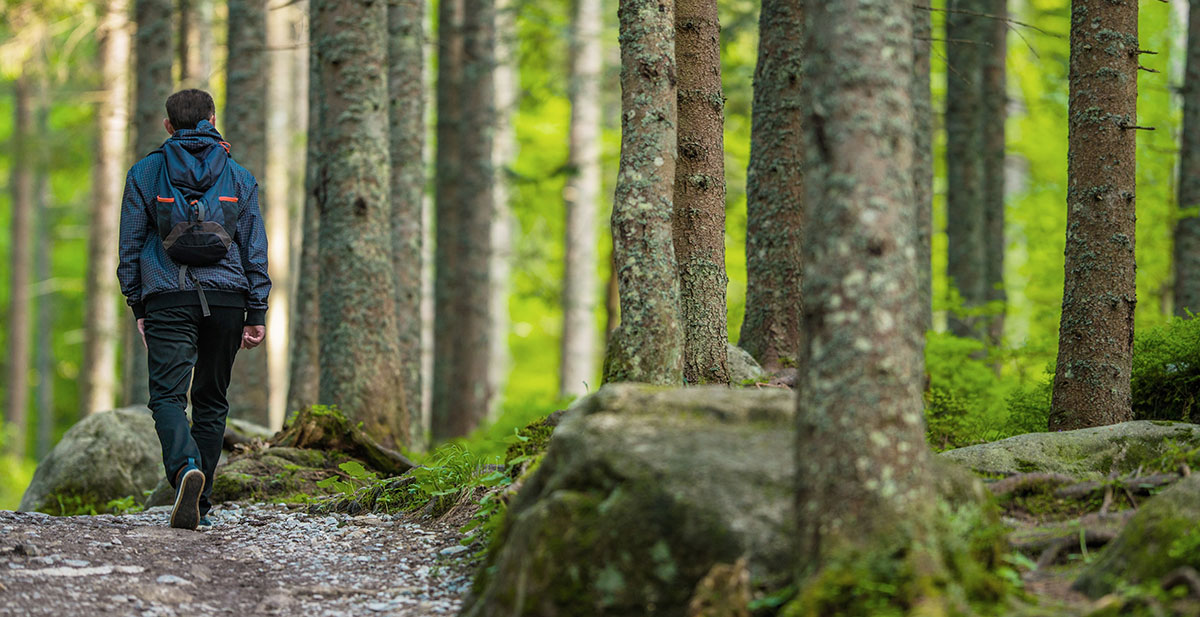Trading Scrubs for Stillness
As physicians, we are trained to thrive in controlled environments—bright lights, sterile surfaces, structured schedules, and fast-paced decisions. But in the stillness of the woods, among rustling leaves and filtered sunlight, I’ve learned some of my most meaningful lessons—not about science, but about perspective, balance, and what it means to heal.
Nature is often seen as an escape from medicine, something we turn to only after the pager is off and the last patient is discharged. But I’ve come to see it differently. Time in nature isn’t a break from being a doctor—it’s essential to becoming a better one.
Listening, Not Fixing
One of the first things I noticed during long walks in the woods is how little is required of me. I don’t have to fix anything. I don’t have to analyze. I just listen—to the birds, the breeze, the stillness. In medicine, we’re always trying to solve problems. We’re wired to jump into action, to make decisions quickly and efficiently. But healing, like nature, is not always about immediate solutions.
Sometimes, patients don’t need us to do something. They need us to listen. They need presence, patience, and quiet understanding. Nature reminded me that stillness is not the absence of care—it’s often the beginning of it.
Embracing Complexity Without Control
Nature is complex, even chaotic at times, but it functions without our intervention. Trees grow in tangled networks, rivers reroute over centuries, and animals live according to rhythms that have nothing to do with charts or protocols.
In the hospital, we often try to control every variable—lab values, vitals, discharge plans. But the human body, like the forest, doesn’t always follow our rules. Patients don’t read textbooks. Illness isn’t linear. When a case doesn’t respond the way we expect, we feel frustrated. We dig deeper. Order more tests. Push for answers.
But sometimes, like in nature, the path forward is not about control. It’s about respect for complexity. Accepting uncertainty. Trusting our training but staying humble. The forest taught me to observe without forcing, and that same lesson has helped me become a more thoughtful, measured physician.
Slowing Down to See Clearly
Nature operates on a different clock than medicine. Trees don’t rush. Streams don’t skip steps. Everything unfolds at its own pace. In contrast, the healthcare system demands speed—see more patients, write faster notes, move quickly from one task to the next. This pace may be efficient, but it comes at a cost: we stop seeing clearly.
When I take time in nature, my thinking slows, and clarity returns. The small details come back into focus—not just in the woods, but in my practice. I begin to notice subtle signs in patients, pay closer attention to their words, and make decisions with more confidence.
Slowness isn’t laziness. It’s a conscious choice to be more deliberate and present. Nature reminded me that wisdom doesn’t always come from rushing forward—it often comes from sitting still.
The Forest as a Place of Reflection
Some of my most difficult cases have stayed with me—not because of the medicine, but because of the people. A patient who died unexpectedly. A conversation that didn’t go well. The quiet sadness of telling a family there’s nothing more we can do. These moments linger long after the chart is closed.
For me, the woods are where I carry those stories. Where I reflect, grieve, and reconnect with the reasons I chose this profession in the first place. It’s easy to become numb in medicine, to compartmentalize and keep moving. But I don’t want to lose my humanity. I don’t want to forget that each patient is someone’s parent, child, or friend.
Nature doesn’t judge emotions. It gives them space to breathe. It reminds me that being a physician is both a privilege and a burden—and that it’s okay to feel both.
Teaching Future Doctors to Look Up
As a medical educator, I often talk with residents and students about clinical reasoning, evidence-based practice, and systems-based care. These are the core skills of modern medicine. But I also try to teach the human side of medicine—the side that isn’t on any exam.
I tell them to take care of themselves. To get outside. To look up from the screen and out the window. Because no matter how smart or skilled you are, you can’t pour from an empty cup.
Many of my students have told me that these conversations helped them as much as any lecture. They want permission to slow down, to be reflective, to find joy in their work. Nature offers that. It’s a place where they can breathe and remember who they are outside the white coat.
Final Thoughts: The Forest Will Wait
Nature has no deadlines. It doesn’t ask you to be perfect. It simply invites you to show up. For physicians—often overburdened, overstimulated, and underslept—that invitation is a gift.
Into the woods, I go to feel small in the best way. To let go of ego. To listen and learn. I come back clearer, calmer, and more connected—not just to myself, but to my patients.
So if you’re feeling overwhelmed, on the edge of burnout, or simply stuck in the daily grind of clinical life, I encourage you to step outside. Go where the trees are. Let nature remind you that healing is not always about doing more. Sometimes it’s about being more—present, open, and alive.
The forest will wait. And it has more to teach us than we ever imagined.
